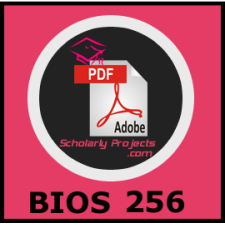Questions: 1-12
1. (TCO 3) These types of cell
junctions anchor adjacent cells together and resist their separation during
contractile activities. (Points : 3)
2. (TCO 3) This type of
epithelial tissue lines the ducts of sweat glands and esophageal glands.
(Points : 3)
3. (TCO 3) Functional
classification of exocrine glands is based on (Points : 3)
4. (TCO 3) This component of
connective tissue is found between the cells and fibers and functions to
support and bind cells in the tissue together. (Points : 3)
5. (TCO 3) Which of the light
micrographs in the figure below shows a simple columnar epithelium? (Points :
3)
6. (TCO 3) Which of the light
micrographs in the figure below shows the type of epithelial tissue found
lining lymphatic vessels? (Points : 3)
7. (TCO 3) Which of the light
micrographs in the figure below shows the type of epithelial tissue whose
functions include filtration, diffusion, osmosis, and secretion in serous
membranes? (Points : 3)
8. (TCO 3) Which of the light
micrographs in the following figure shows the type of epithelial tissue that
lines the urinary bladder walls? (Points : 3)
9. (TCO 3) Which is a function
of the tissue shown in diagram A? (Points : 3)
10. (TCO 3) Which of the
following is a term used to describe an increase in the size of a tissue that
is the result of an increase in the size, not number, of cells in that tissue?
(Points : 3)
11. (TCO 3) Name and briefly
describe the different categories of epithelial tissues based on cell shape and
number of layers of cells found in the tissue. (Points : 5)
12. (TCO 3) Discuss how a damaged tissue is repaired. (Points : 5)
Related Products
Tags: BIOS 256 Week 3 Quiz, BIOS256 Week3 Quiz.
Message
All members who signed up before 2023 are requested to register again.

